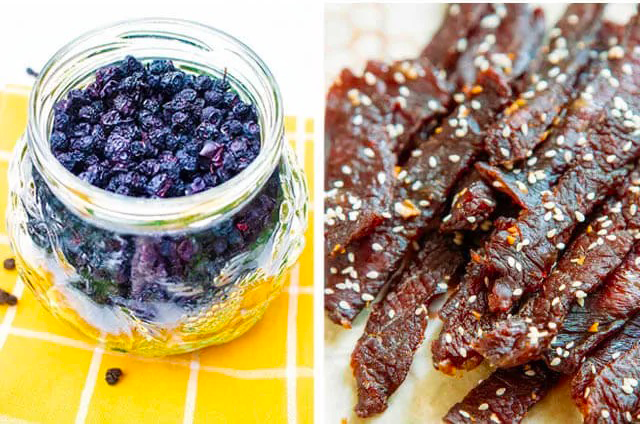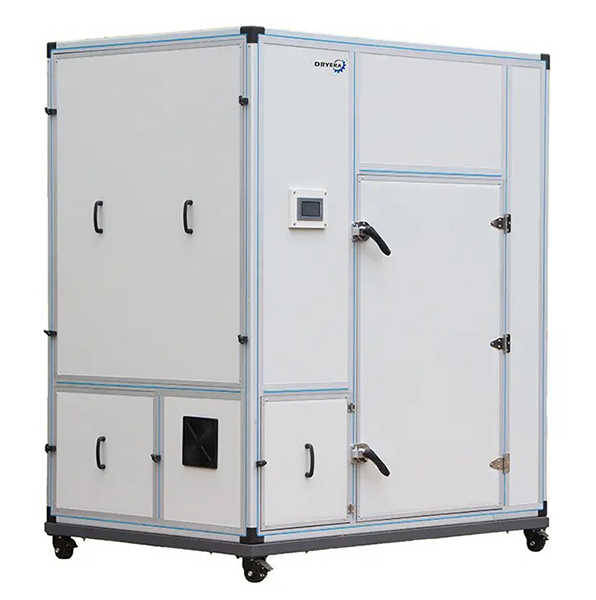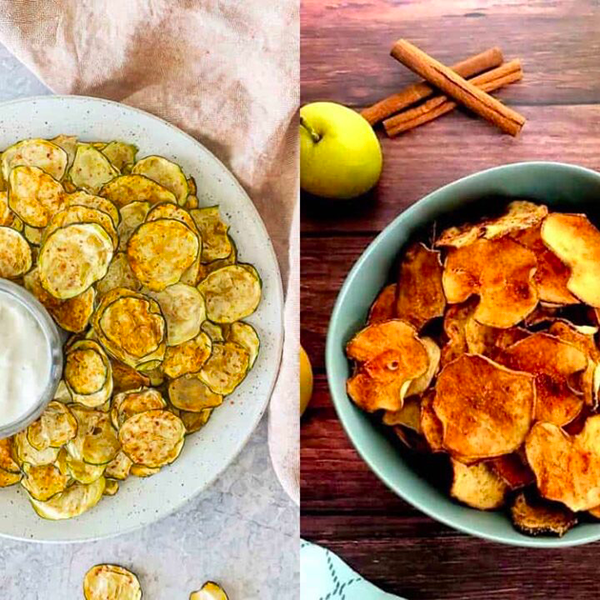
Content Menu
● What is a Food Dehydrator?
● Benefits of Using a Food Dehydrator
● Getting Started with Your Food Dehydrator
● Common Foods to Dehydrate
● Tips for Successful Dehydrating
● Dehydrating Techniques
>> 1. Preparing Fruits
>> 2. Dehydrating Vegetables
>> 3. Making Jerky
● Creative Uses for Dried Foods
● Recipes to Try
● Conclusion
● FAQs
>> 1. What types of foods can I dehydrate?
>> 2. How do I know when my food is properly dehydrated?
>> 3. Can I dehydrate cooked foods?
>> 4. How should I store dehydrated foods?
>> 5. Can I use a regular oven instead of a dehydrator?
● Citations:
Food dehydrators are versatile kitchen appliances that allow you to preserve various foods by removing moisture, thus extending their shelf life and enhancing flavors. This beginner's guide will explore how to use a food dehydrator effectively, including tips, techniques, and common FAQs.

What is a Food Dehydrator?
A food dehydrator is a device designed to remove moisture from food, which inhibits the growth of bacteria and mold. By using low heat and airflow, it can dry fruits, vegetables, meats, and herbs while retaining most of their nutrients and flavors.
Benefits of Using a Food Dehydrator
- Preservation: Extends the shelf life of food without the need for preservatives.
- Nutritional Retention: Maintains vitamins and minerals better than other preservation methods.
- Cost-Effective: Allows you to buy in bulk and reduce food waste.
- Convenience: Creates lightweight snacks ideal for camping or hiking.
- Customization: You can control the ingredients and flavors in your dried foods.
Getting Started with Your Food Dehydrator
1. Choose the Right Dehydrator: There are various models available, including stackable tray dehydrators and those with built-in fans. Choose one that fits your needs and budget.
2. Read the Manual: Familiarize yourself with your dehydrator's specific features and settings. Each model may have different temperature settings and drying times.
3. Prepare Your Ingredients: Wash all fruits, vegetables, or meats thoroughly. For best results:
- Slice items evenly to ensure consistent drying.
- Blanch vegetables before dehydrating to preserve color and nutrients.
- Pretreat fruits with lemon juice or ascorbic acid to prevent browning.
4. Set Up Your Dehydrator:
- Arrange food items on the trays without overcrowding them.
- Ensure there is space for air circulation.
5. Select Temperature Settings:
- Most foods dehydrate well at temperatures between 120°F to 160°F (49°C to 71°C). Refer to your manual for specific guidelines on different foods.
6. Monitor Drying Process: Check on your food periodically to ensure it's drying evenly. Rotate trays if necessary.
7. Conditioning Dried Foods: After drying, let the food cool completely before storing it in airtight containers. This helps equalize moisture levels within the batch.
8. Storage: Store dried food in cool, dark places in airtight containers or vacuum-sealed bags to maximize shelf life.

Common Foods to Dehydrate
- Fruits: Apples, bananas, strawberries, peaches, apricots, cherries, grapes, mangos.
- Vegetables: Carrots, bell peppers, tomatoes, zucchini, broccoli, spinach.
- Herbs: Basil, parsley, thyme, rosemary.
- Meats: Jerky can be made from beef, chicken, or turkey with proper preparation.
Tips for Successful Dehydrating
- Cut food into uniform sizes for even drying.
- Use mesh sheets for small items like herbs or berries to prevent them from falling through the trays.
- Avoid dehydrating foods that have high-fat content as they can spoil faster.
- Keep a log of drying times and temperatures for future reference.
Dehydrating Techniques
1. Preparing Fruits
When dehydrating fruits:
- Wash thoroughly and slice uniformly.
- Consider pretreating with lemon juice or an ascorbic acid dip to maintain color and flavor.
- Dehydrate at temperatures between 135°F and 140°F (57°C - 60°C) for optimal results.
2. Dehydrating Vegetables
For vegetables:
- Blanching is recommended before dehydration to preserve color and nutrients.
- Slice into even pieces; thicker pieces take longer to dry.
- Ideal temperatures range from 125°F to 135°F (52°C - 57°C).
3. Making Jerky
To make jerky:
- Use lean cuts of meat; trim off excess fat which can spoil quickly.
- Marinate meat beforehand for added flavor; common marinades include soy sauce, Worcestershire sauce, garlic powder, and pepper.
- Dry at temperatures between 145°F and 160°F (63°C - 71°C) until fully dried but still flexible.
Creative Uses for Dried Foods
Dried foods can be used in various recipes beyond snacking:
- Trail Mixes: Combine dried fruits with nuts and seeds for a nutritious snack on-the-go.
- Soups & Stews: Add dried vegetables or meats directly into soups; they will rehydrate during cooking.
- Baking Ingredients: Incorporate dried fruits into muffins or breads for added sweetness and texture.
Recipes to Try
Here are some delicious recipes you can try using your dehydrated foods:
1. Homemade Fruit Leather:
- Blend your choice of fruit (like strawberries or mango) with a bit of honey or sugar until smooth.
- Pour onto a dehydrator tray lined with parchment paper and spread evenly.
- Dehydrate at 135°F (57°C) for about 6–9 hours until leathery but not sticky.
2. Veggie Chips:
- Slice vegetables like zucchini or sweet potatoes thinly.
- Toss with olive oil and seasonings (salt, pepper, garlic powder).
- Dehydrate at 125°F (52°C) until crispy.
3. Beef Jerky:
- Marinate thin strips of beef in soy sauce, brown sugar, garlic powder, onion powder, and black pepper overnight.
- Place on dehydrator trays and dry at 160°F (71°C) for about 6–10 hours until chewy but not brittle.
4. Dried Fruit Snacks:
- Simply slice apples or pears thinly; sprinkle with cinnamon if desired.
- Dehydrate at 135°F (57°C) until crisp but not hard.
5. Herb Seasoning Mixes:
- Dehydrate fresh herbs like basil or oregano until crumbly.
- Blend into a fine powder and store in an airtight container for seasoning dishes throughout the year.
Conclusion
Using a food dehydrator can be an enjoyable and rewarding experience that allows you to preserve your favorite foods while saving money and reducing waste. By following the steps outlined in this guide, beginners can confidently start their journey into food dehydration. With practice and experimentation, you will discover new ways to enjoy dried foods beyond simple snacks—enhancing meals while maintaining nutritional value.

FAQs
1. What types of foods can I dehydrate?
You can dehydrate fruits, vegetables, herbs, meats (for jerky), sauces like tomato paste or barbecue sauce—almost anything except high-fat foods which spoil quickly.
2. How do I know when my food is properly dehydrated?
Foods should be dry but still flexible (like fruit leathers) or brittle (like chips). There should be no moisture left when you break pieces apart; if they feel sticky or soft inside after cooling down completely, they need more time in the dehydrator.
3. Can I dehydrate cooked foods?
Yes! Cooked foods can be dehydrated; however, ensure they are cooled before placing them in the dehydrator to prevent spoilage during drying.
4. How should I store dehydrated foods?
Store them in airtight containers in a cool dark place; glass jars or vacuum-sealed bags work well for long-term storage—label them with dates for easy tracking!
5. Can I use a regular oven instead of a dehydrator?
Yes! You can use an oven set at low temperatures (around 140°F) with the door slightly ajar to allow moisture to escape; however it may not be as efficient as a dedicated dehydrator due to uneven heat distribution.
Citations:
[1] https://www.campkitchen.ca/blog/dehydrating-basics
[2] https://homesteadingfamily.com/preservation-101-intro-to-dehydrating-food/
[3] https://www.youtube.com/playlist?list=PL6ygl2lNPriODiu2XahnHHUhj6mEObz0P
[4] https://slowerhiking.com/food/adapt-your-favourite-recipes
[5] https://www.allrecipes.com/article/how-to-use-a-food-dehydrator/
[6] https://cottageatthecrossroads.com/dehydrator-recipes/
[7] https://eatsleepwild.com/homemade-dehydrated-backpacking-meals/
[8] https://www.mitchellcooper.co.uk/what-is-a-dehydrator-commercial-buying-guide
[9] https://insanelygoodrecipes.com/dehydrator-recipes/
[10] https://www.healthline.com/nutrition/dehydrated-food












